Abstract
Phototransformable protochlorophyllide holochrome was prepared from etiolated bean leaves. The detergent Triton X-100 in the presence of glycerol and tricine-KOH buffer (pH 8) enhanced the extractability, specific activity, and phototransformability of the holochrome. Purification was achieved by polyethylene glycol-6000 precipitation and hydroxyl-apatite, DEAE-cellulose, and agarose chromatography. The presence of Triton X-100 permitted removal of the carotenoid contamination from the holochrome. The 678-nm absorption maximum of newly formed chlorophyllide a holochrome shifts to 672 nm in a temperature-dependent manner. The purified holochrome contains 0.24 g of protein per μmole of protochlorophyllide. Estimation of the molecular weight of the holochrome by gel filtration on agarose revealed the presence of aggregates of approximately 550,000 and 300,000. There are at least 2 chromophores per 550,000 molecular weight.
Full text
PDF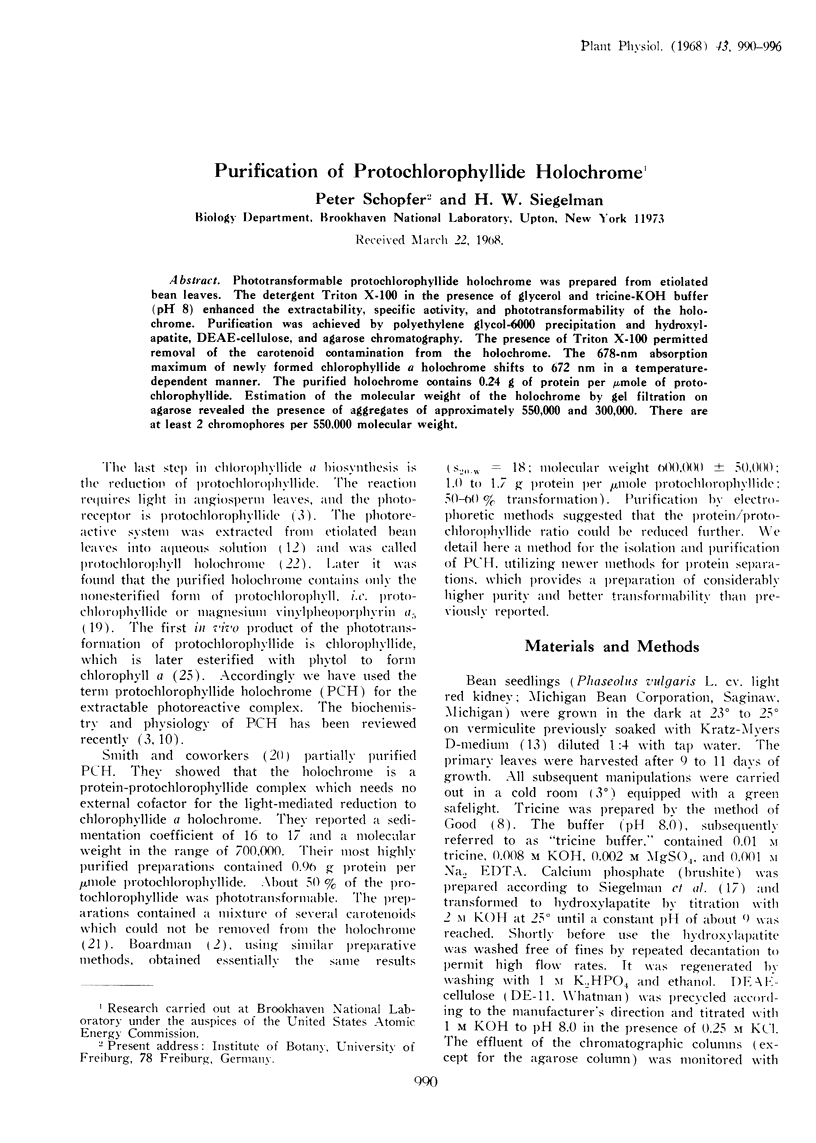
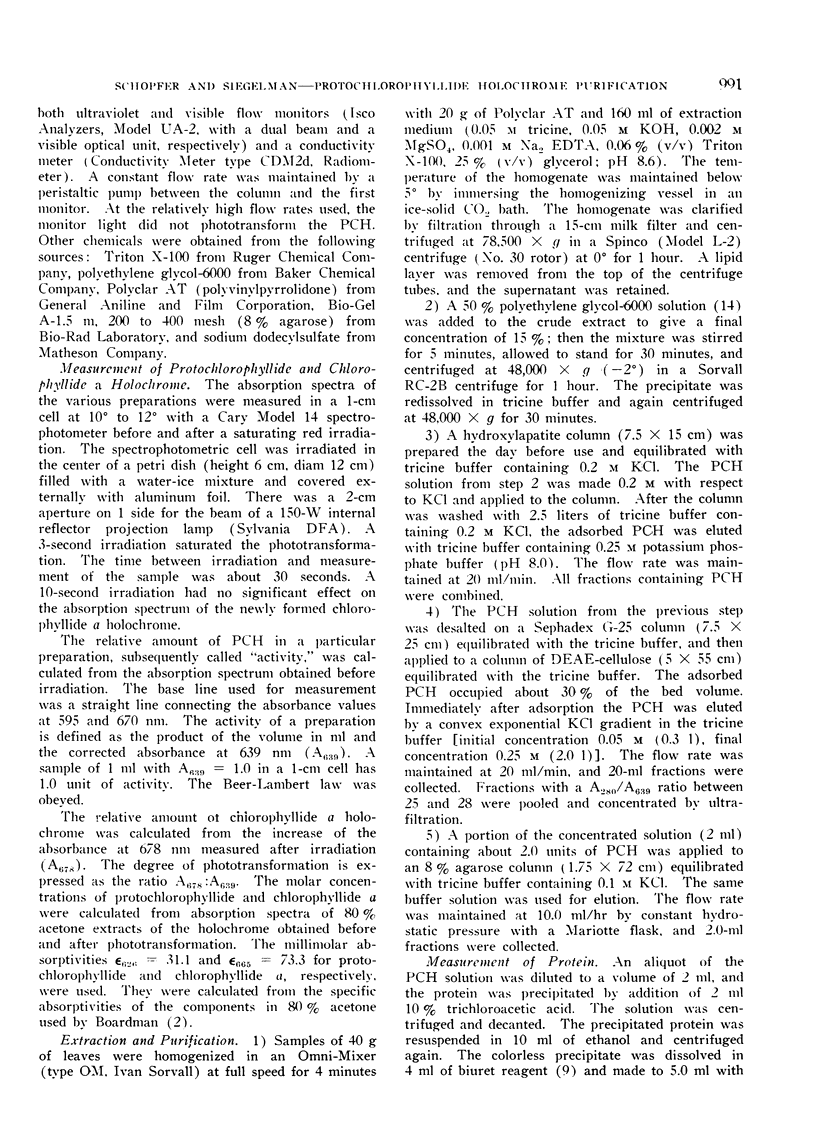
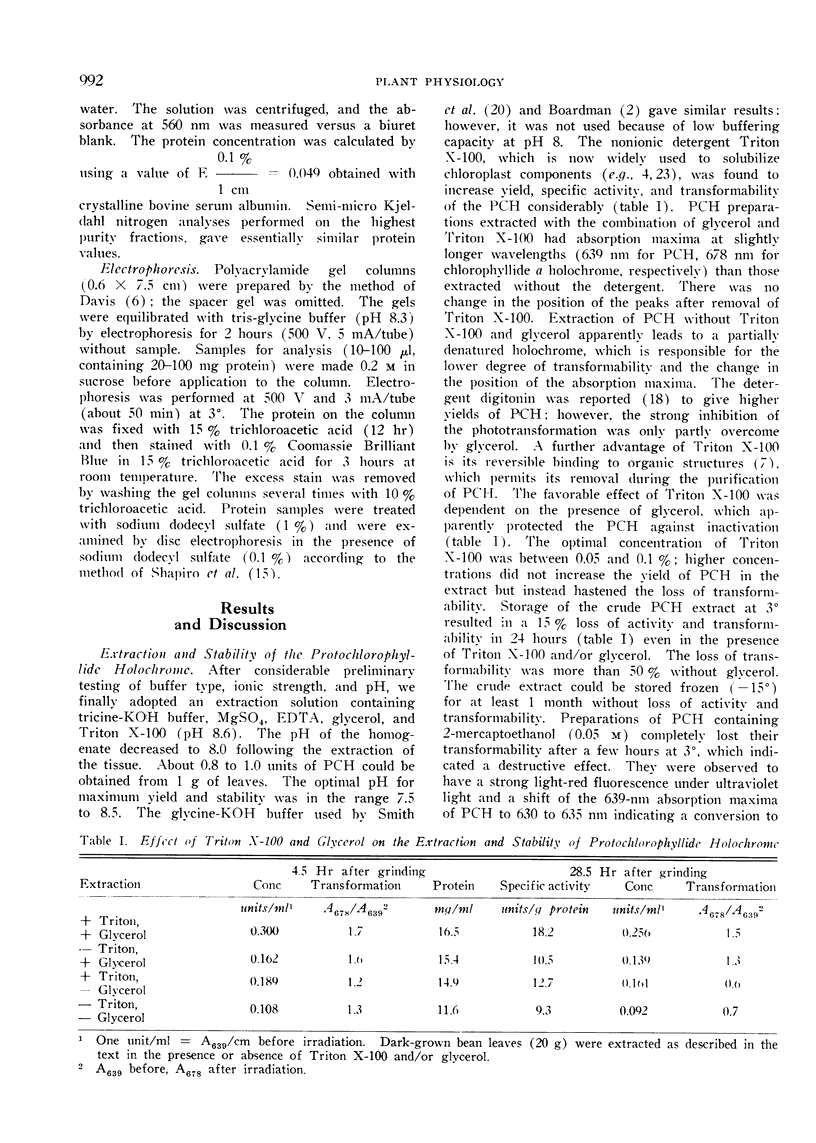
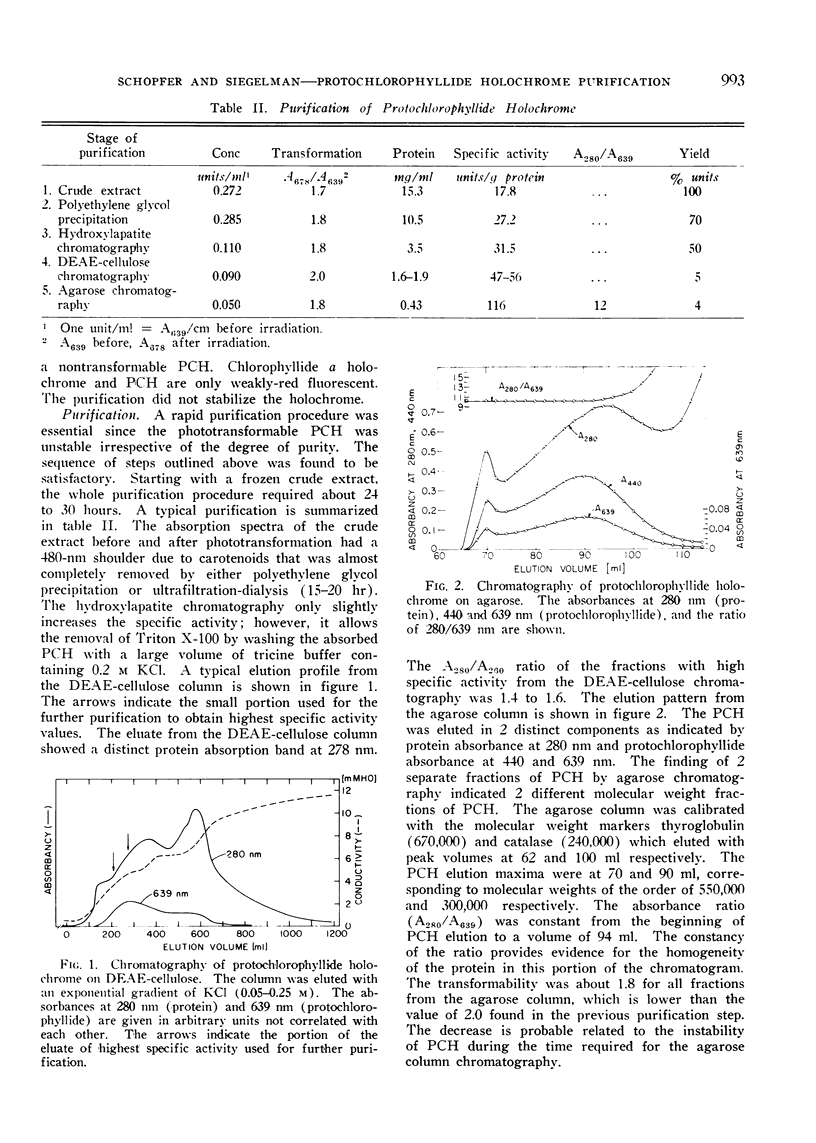
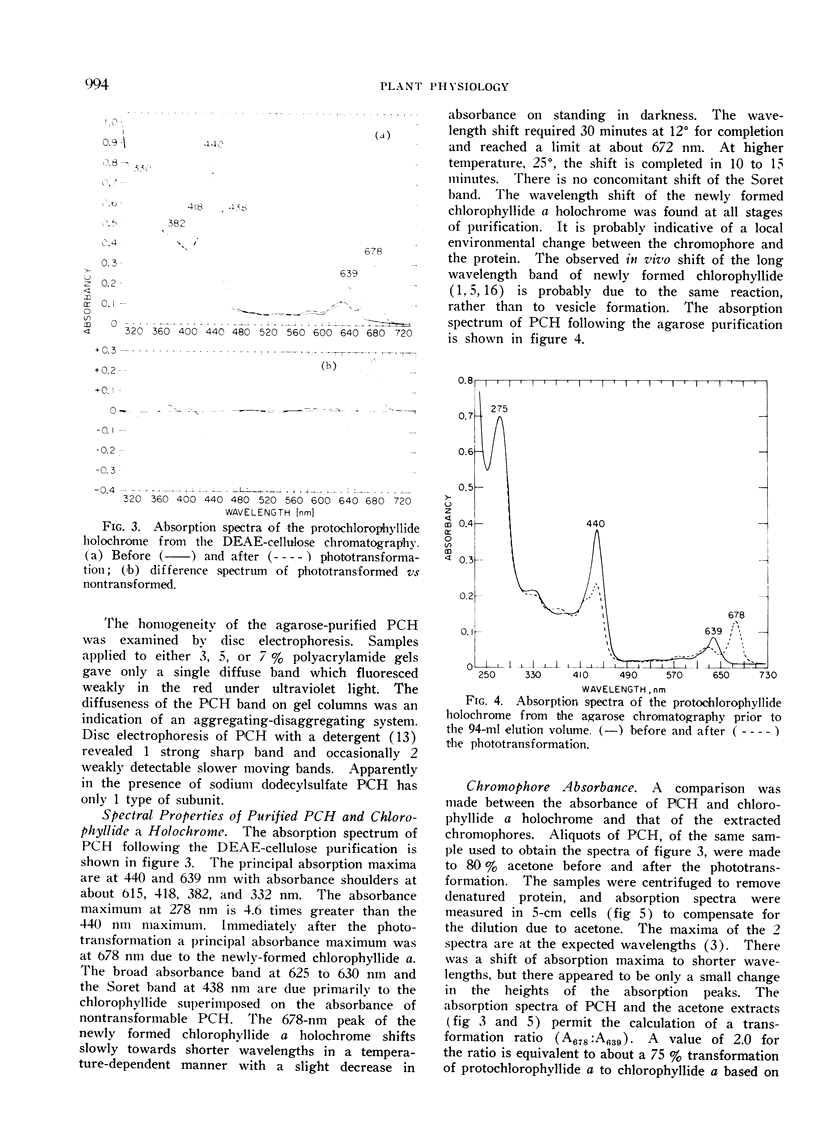
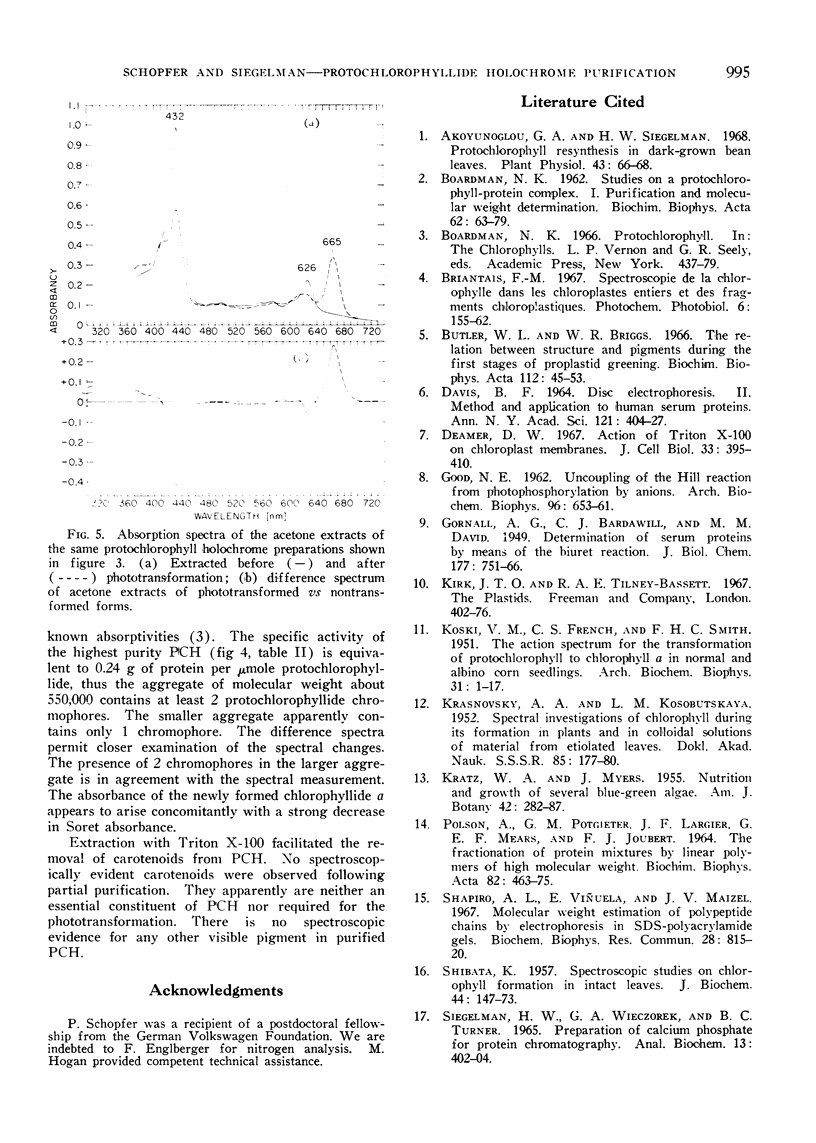
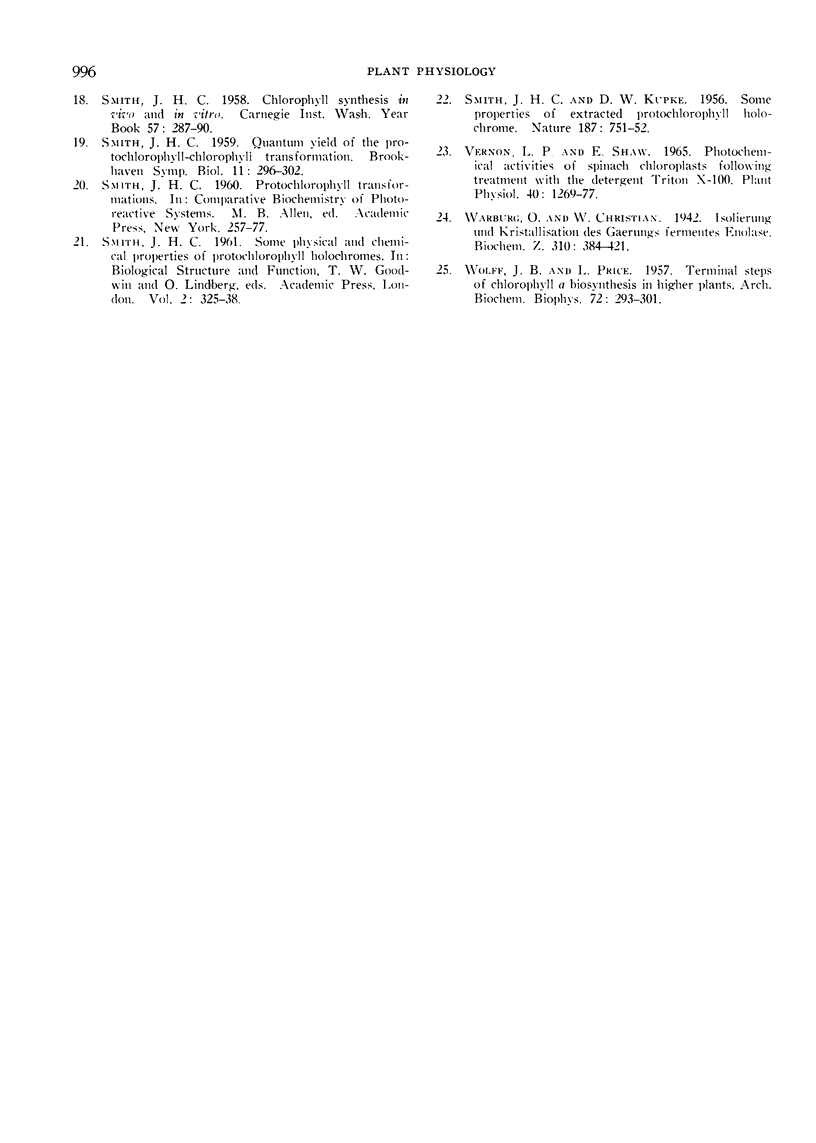
Selected References
These references are in PubMed. This may not be the complete list of references from this article.
- Akoyunoglou G. A., Siegelman H. W. Protochlorophyllide resynthesis in dark-grown bean leaves. Plant Physiol. 1968 Jan;43(1):66–68. doi: 10.1104/pp.43.1.66. [DOI] [PMC free article] [PubMed] [Google Scholar]
- BOARDMAN N. K. Studies on a protochlorophyll-protein complex. I. Purification and molecular-weight determination. Biochim Biophys Acta. 1962 Jul 30;62:63–79. doi: 10.1016/0006-3002(62)90492-4. [DOI] [PubMed] [Google Scholar]
- Butler W. L., Briggs W. R. The relation between structure and pigments during the first stages of proplastid greening. Biochim Biophys Acta. 1966 Jan 4;112(1):45–53. doi: 10.1016/s0926-6585(96)90006-0. [DOI] [PubMed] [Google Scholar]
- DAVIS B. J. DISC ELECTROPHORESIS. II. METHOD AND APPLICATION TO HUMAN SERUM PROTEINS. Ann N Y Acad Sci. 1964 Dec 28;121:404–427. doi: 10.1111/j.1749-6632.1964.tb14213.x. [DOI] [PubMed] [Google Scholar]
- Deamer D. W., Crofts A. Action of Triton X-100 on chloroplast membranes. Mechanisms of structural and functional disruption. J Cell Biol. 1967 May;33(2):395–410. doi: 10.1083/jcb.33.2.395. [DOI] [PMC free article] [PubMed] [Google Scholar]
- GOOD N. E. Uncoupling of the Hill reaction from photophosphorylation by anions. Arch Biochem Biophys. 1962 Mar;96:653–661. doi: 10.1016/0003-9861(62)90352-1. [DOI] [PubMed] [Google Scholar]
- KOSKI V. M., FRENCH C. S., SMITH J. H. C. The action spectrum for the transformation of protochlorophyll to chlorophyll a in normal and albino corn seedlings. Arch Biochem Biophys. 1951 Mar;31(1):1–17. doi: 10.1016/0003-9861(51)90178-6. [DOI] [PubMed] [Google Scholar]
- POLSON A., POTGIETER G. M., LARGIER J. F., MEARS G. E., JOUBERT F. J. THE FRACTIONATION OF PROTEIN MIXTURES BY LINEAR POLYMERS OF HIGH MOLECULAR WEIGHT. Biochim Biophys Acta. 1964 Mar 16;82:463–475. doi: 10.1016/0304-4165(64)90438-6. [DOI] [PubMed] [Google Scholar]
- Shapiro A. L., Viñuela E., Maizel J. V., Jr Molecular weight estimation of polypeptide chains by electrophoresis in SDS-polyacrylamide gels. Biochem Biophys Res Commun. 1967 Sep 7;28(5):815–820. doi: 10.1016/0006-291x(67)90391-9. [DOI] [PubMed] [Google Scholar]
- Siegelman H. W., Wieczorek G. A., Turner B. C. Preparation of calcium phosphate for protein chromatography. Anal Biochem. 1965 Dec;13(3):402–404. doi: 10.1016/0003-2697(65)90332-5. [DOI] [PubMed] [Google Scholar]
- Vernon L. P., Shaw E. Photochemical Activities of Spinach Chloroplasts Following Treatment with the Detergent Triton X-100. Plant Physiol. 1965 Nov;40(6):1269–1277. doi: 10.1104/pp.40.6.1269. [DOI] [PMC free article] [PubMed] [Google Scholar]


